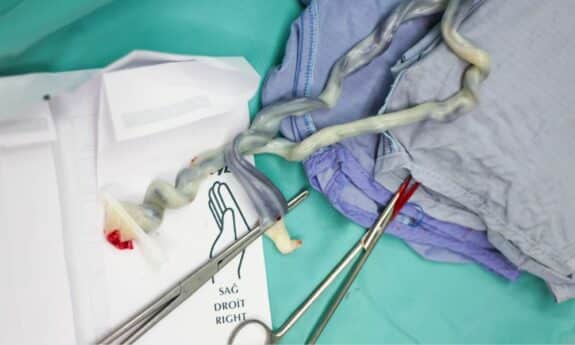In a recent study published in the Journal of the American Medical Association, researchers from McMaster University have suggested that delaying the clamping of the umbilical cord at birth by approximately two minutes can have long-lasting health benefits for newborns.
This practice, known as late clamping, allows for more blood to flow from the cord and placenta into the infant, increasing iron levels and reducing the risk of anemia in the crucial first weeks and months of life.
While this finding may be particularly important for developing countries where anemia in infancy and childhood is prevalent, the researchers believe it could have a significant impact on all newborns, regardless of birth setting.
However, the adoption of late clamping is not widely practiced in developed countries, and this study may not change that fact, according to an editorial published in the same journal. The editorial suggests that a well-designed and preferably multicenter randomized controlled trial is needed to provide a stronger and universal endorsement of delayed clamping, addressing both the benefits and potential adverse effects.
It’s worth noting that the McMaster team’s article is not a clinical trial, but rather an analysis of 15 existing studies that examined the advantages and risks of late clamping.
Lead author Eileen Hutton, assistant dean of midwifery at McMaster University, stated that there has been ongoing debate among doctors regarding early versus late clamping. Some doctors believe in clamping the umbilical cord immediately to aid in the delivery of the placenta and to reduce the risk of polycythemia, a condition where the blood is too rich in red blood cells, making it difficult for the blood to flow properly.
The study found that the increased iron stores from late clamping lasted up to six months of age, providing babies with a better start in life.
While late clamping may not be at the forefront of expectant mothers’ minds during childbirth, it is worth discussing with the delivery physician to make an informed decision about this practice before labor begins.







